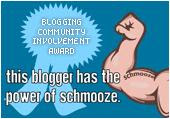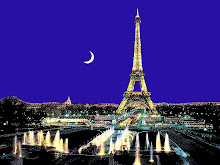New site (2)
Referring to the below post, answering some questions and possibly making it more clear: This site will still be here, but not anymore in operation. All new posts will be on my new site, which you can find HERE.
A newly retired Swede, living in Paris.
Posted by Peter at 24.3.08 19 comments
 This site has now been in operation for exactly one year. Some 350 posts. Thanks for all your visits!
This site has now been in operation for exactly one year. Some 350 posts. Thanks for all your visits!Posted by Peter at 23.3.08 21 comments
 This is in my taste a fabulous little area, a small Montmartre – without tourists. (Sorry, I have nothing against kind tourists, but…).
This is in my taste a fabulous little area, a small Montmartre – without tourists. (Sorry, I have nothing against kind tourists, but…). I then headed for the central place, on top of the hill, Place Paul-Verlaine, where we find our spring water and the public swimming bath, built in 1924 (see yesterday's post).
I then headed for the central place, on top of the hill, Place Paul-Verlaine, where we find our spring water and the public swimming bath, built in 1924 (see yesterday's post).  This is also the spot which was reached by the first ever human flight, by a “montgolfière”, coming from La Muette (16th arrdt,) some 9-10 km (6 miles) away. (See my post February 08). You can find a small memorial.
This is also the spot which was reached by the first ever human flight, by a “montgolfière”, coming from La Muette (16th arrdt,) some 9-10 km (6 miles) away. (See my post February 08). You can find a small memorial. Opening to the place is also a school, founded in the middle of the 19th century by the Sisters of Saint Vincent de Paul. It was originally thought for the professional education of girls of modest origin. They were taught the ladies' professions of those times; they prepared even dresses for Queen Victoria! Today, it’s just a “normal school”.
Opening to the place is also a school, founded in the middle of the 19th century by the Sisters of Saint Vincent de Paul. It was originally thought for the professional education of girls of modest origin. They were taught the ladies' professions of those times; they prepared even dresses for Queen Victoria! Today, it’s just a “normal school”.  The place is full of narrow streets, small houses, small private gardens … and of course bars and restaurants. I will come back to all this, but in the meantime, let’s celebrate Easter! (See you Monday – or Tuesday!)
The place is full of narrow streets, small houses, small private gardens … and of course bars and restaurants. I will come back to all this, but in the meantime, let’s celebrate Easter! (See you Monday – or Tuesday!) Posted by Peter at 21.3.08 48 comments
 You can also get pure spring water in Paris – and for free! Some 600 or 700 meters under the ground you can find some 25 000 years old fresh water from an underground river and you can still get hold of it at three places in Paris, quite distant from each other (see the map). It holds some 25-30 Centigrades (some 80° Fahrenheit) if you drink it immediately, but if you live fairly close you would probably bring some plastic bottles and then take them to your fridge. Many people do. If you are interested in the water quality, it’s checked regularly and you can find an updated report on the spot.
You can also get pure spring water in Paris – and for free! Some 600 or 700 meters under the ground you can find some 25 000 years old fresh water from an underground river and you can still get hold of it at three places in Paris, quite distant from each other (see the map). It holds some 25-30 Centigrades (some 80° Fahrenheit) if you drink it immediately, but if you live fairly close you would probably bring some plastic bottles and then take them to your fridge. Many people do. If you are interested in the water quality, it’s checked regularly and you can find an updated report on the spot. One of the sources can be found at the Buttes aux Cailles, Place Paul-Verlaine, 13th arrondissement. It gives enough of water also to feed the local swimming bath. (I will soon come back to this area.)
One of the sources can be found at the Buttes aux Cailles, Place Paul-Verlaine, 13th arrondissement. It gives enough of water also to feed the local swimming bath. (I will soon come back to this area.)  Another one is at Square Lamartine in the bourgeois 16th arrondissement.
Another one is at Square Lamartine in the bourgeois 16th arrondissement. … and the third one is in the much more popular 18th arrondissement, Square de la Madone, today surrounded by a number of Chinese shops and supermarkets. (We are getting a number of China towns).
… and the third one is in the much more popular 18th arrondissement, Square de la Madone, today surrounded by a number of Chinese shops and supermarkets. (We are getting a number of China towns).

Posted by Peter at 20.3.08 25 comments
 The Canal Saint Martin (my post yesterday) ends (or starts) with the Bassin de la Villette. This is the largest open water space in Paris. At the opposite end, this basin meets the Canal de l’Ourcq which brings the water to the canal system from the river Ourcq, some 100 km (60 miles) away. The basin is actually in two parts; a larger one (700 x 70 m = 2300 x 230 ft) and a second more narrow one (730 x 30 m = 2400 x 100 ft). They are separated by a hydraulic lift-bridge from 1885, still functioning and causing some traffic jams when it nowadays occasionally has to be opened (or lifted).
The Canal Saint Martin (my post yesterday) ends (or starts) with the Bassin de la Villette. This is the largest open water space in Paris. At the opposite end, this basin meets the Canal de l’Ourcq which brings the water to the canal system from the river Ourcq, some 100 km (60 miles) away. The basin is actually in two parts; a larger one (700 x 70 m = 2300 x 230 ft) and a second more narrow one (730 x 30 m = 2400 x 100 ft). They are separated by a hydraulic lift-bridge from 1885, still functioning and causing some traffic jams when it nowadays occasionally has to be opened (or lifted). 

 The larger part of the basin was in the beginning of the 19th century, just after its construction, surrounded by green areas and it was popular to come here for picnics in the summer and for skating in the winter. (Yes, the climate is getting warmer – no ice here anymore.) It served as an enormous reservoir of drinking water. During the second part of the 19th century, the basin became more and more industrial and the port activities were at a time considerable (same volumes as in the port of Bordeaux). Some of the old administrative and warehouse buildings (partly tagged) are still there.
The larger part of the basin was in the beginning of the 19th century, just after its construction, surrounded by green areas and it was popular to come here for picnics in the summer and for skating in the winter. (Yes, the climate is getting warmer – no ice here anymore.) It served as an enormous reservoir of drinking water. During the second part of the 19th century, the basin became more and more industrial and the port activities were at a time considerable (same volumes as in the port of Bordeaux). Some of the old administrative and warehouse buildings (partly tagged) are still there. Nowadays, both basins are basically surrounded by modern apartment and office buildings, but around the larger part of the basin you can also find some more distracting activities. There are two multiplex cinemas, one on each side of the basin, belonging to the same company - offering a boat trip from one quay to the other. There are some installations for kids to play, some statues (including a laying Eiffel-tower-like one), some cafés and restaurants, some barges used as theatres… Part of July-August the Paris-Plages is now also installed here with a lot of “beach-activities”, as along the Seine river (see my post from July 21, 2007). This is also the base for a number of sightseeing boats, which can bring you along the Canal Saint Martin or elsewhere. (My photos from a relatively cold March day show fewer activities.)
Nowadays, both basins are basically surrounded by modern apartment and office buildings, but around the larger part of the basin you can also find some more distracting activities. There are two multiplex cinemas, one on each side of the basin, belonging to the same company - offering a boat trip from one quay to the other. There are some installations for kids to play, some statues (including a laying Eiffel-tower-like one), some cafés and restaurants, some barges used as theatres… Part of July-August the Paris-Plages is now also installed here with a lot of “beach-activities”, as along the Seine river (see my post from July 21, 2007). This is also the base for a number of sightseeing boats, which can bring you along the Canal Saint Martin or elsewhere. (My photos from a relatively cold March day show fewer activities.) 
 At the end of the basin, where the Canal Saint Martin begins (or ends) you will find a round building, the “Rotonde de la Villette”, which dates from around 1787 and was part of the wall “Fermiers Généraux” (served as office), built around what was those day’s smaller Paris, to enable tax collection for food, beverages, building material etc. entering the city; a very unpopular tax which was stopped a few years later, immediately after the Revolution. (See my post of January 18.) The building will now be transformed into some kind of small cultural centre.
At the end of the basin, where the Canal Saint Martin begins (or ends) you will find a round building, the “Rotonde de la Villette”, which dates from around 1787 and was part of the wall “Fermiers Généraux” (served as office), built around what was those day’s smaller Paris, to enable tax collection for food, beverages, building material etc. entering the city; a very unpopular tax which was stopped a few years later, immediately after the Revolution. (See my post of January 18.) The building will now be transformed into some kind of small cultural centre.Posted by Peter at 19.3.08 29 comments
 You can follow the trace of Canal Saint Martin on this map. The starting (or ending) point is close to Place de la Bastille. I already talked about this part, the so called Port de l'Arsenal, in some previous posts (1, 2). After La Bastille the canal goes underground, more or less until it reaches a point near Place de la République (the dotted line).
You can follow the trace of Canal Saint Martin on this map. The starting (or ending) point is close to Place de la Bastille. I already talked about this part, the so called Port de l'Arsenal, in some previous posts (1, 2). After La Bastille the canal goes underground, more or less until it reaches a point near Place de la République (the dotted line).



 Along the canal you can find the - at least for Frenchmen - well-known "Hôtel du Nord" - still there - which, with the pedestrian bridge in front of it, is the place of some famous film scenes; "Hôtel du Nord", Marcel Camus, 1938. The film was however made with studio decoration. A scene from "Amélie Poulain" was shot on the spot.
Along the canal you can find the - at least for Frenchmen - well-known "Hôtel du Nord" - still there - which, with the pedestrian bridge in front of it, is the place of some famous film scenes; "Hôtel du Nord", Marcel Camus, 1938. The film was however made with studio decoration. A scene from "Amélie Poulain" was shot on the spot. 
Posted by Peter at 18.3.08 43 comments
 I like the atmosphere in the local street Saturday morning – and also on Sunday morning – when you find the population which normally is working or in school during the week.
I like the atmosphere in the local street Saturday morning – and also on Sunday morning – when you find the population which normally is working or in school during the week. 
 Saturday morning there is also a local open market.
Saturday morning there is also a local open market.
 After shopping, I made a small detour to “my” park. The tulips have now taken over the reign after the narcissuses. The weather was sufficiently nice to enable a pleasant pause on a bench. Some people got married.
After shopping, I made a small detour to “my” park. The tulips have now taken over the reign after the narcissuses. The weather was sufficiently nice to enable a pleasant pause on a bench. Some people got married.  On the way home, I found that a small demonstration took place. The controversial Church of Scientology is present in our quarter. A group, calling itself “Anonymous”, held a worldwide protest action day Saturday (L. Ron Hubbard’s birthday), including here. It was a calm and peaceful demonstration, but obviously the church does not appreciate criticism and had asked for (strong) police protection. The protesters are in general bearing masks, wishing to stay anonymous, claiming having received menaces. (There is much more to be said about this, but here is perhaps not the forum – I tried a rather “neutral” statement… however, if you wish, feel free to express your opinion.)
On the way home, I found that a small demonstration took place. The controversial Church of Scientology is present in our quarter. A group, calling itself “Anonymous”, held a worldwide protest action day Saturday (L. Ron Hubbard’s birthday), including here. It was a calm and peaceful demonstration, but obviously the church does not appreciate criticism and had asked for (strong) police protection. The protesters are in general bearing masks, wishing to stay anonymous, claiming having received menaces. (There is much more to be said about this, but here is perhaps not the forum – I tried a rather “neutral” statement… however, if you wish, feel free to express your opinion.) In the evening I assisted at a local gathering with a nice meal and some nice music, performed among others by Russian and Kabyle (Algerian ethnic) representatives living in the area. (I did not bring my camera.)
In the evening I assisted at a local gathering with a nice meal and some nice music, performed among others by Russian and Kabyle (Algerian ethnic) representatives living in the area. (I did not bring my camera.) Posted by Peter at 17.3.08 27 comments
Posted by Peter at 15.3.08 25 comments
 The other building I wanted to mention is the “Hôtel de Soubise” (no. 60), built in the beginning of the 18th century (top picture). It replaced another mansion built during the 13th century and which during the 15th century became the residence of the Guise family, fervent Catholics, and this was where e.g. the Saint Bartholomew”s Day massacre was planned (1572), leading to the death of thousands of Huguenots. You can still see the old entrance to the previous building on the back side (bottom right picture on the below patchwork). The present building was in 1808 (Napoleon again) taken over by the French state and is since the place for (today, part of) the National Archives and also a museum. Only here – and in adjacent buildings - are today stored some 100 km (60 miles) of documents, the oldest form the 7th century.
The other building I wanted to mention is the “Hôtel de Soubise” (no. 60), built in the beginning of the 18th century (top picture). It replaced another mansion built during the 13th century and which during the 15th century became the residence of the Guise family, fervent Catholics, and this was where e.g. the Saint Bartholomew”s Day massacre was planned (1572), leading to the death of thousands of Huguenots. You can still see the old entrance to the previous building on the back side (bottom right picture on the below patchwork). The present building was in 1808 (Napoleon again) taken over by the French state and is since the place for (today, part of) the National Archives and also a museum. Only here – and in adjacent buildings - are today stored some 100 km (60 miles) of documents, the oldest form the 7th century.  When walking along this street at lunch time together with a friend on our way from Place des Vosges, we made a small deviation, turned to the left at rue Vieille du Temple and found (at no. 30) a small restaurant, "Au Petit Fer à Cheval" (the Small Horse Shoe). The menu and the place looked nice, so we decided to give it a try. I can now say that it was nice. The restaurant dates from 1903, the marble-topped bar in the entrance has the shape of a horse shoe and behind the bar there is room for maybe twenty guests. The restaurant has obviously at a certain moment been restored with some type of 1925 decoration, but it all gives a very authentic impression, the waiters look like the waiters used to look like, the place got full and I believe only with more or less regular guests! Traditional dishes, nice atmosphere and reasonable prices!
When walking along this street at lunch time together with a friend on our way from Place des Vosges, we made a small deviation, turned to the left at rue Vieille du Temple and found (at no. 30) a small restaurant, "Au Petit Fer à Cheval" (the Small Horse Shoe). The menu and the place looked nice, so we decided to give it a try. I can now say that it was nice. The restaurant dates from 1903, the marble-topped bar in the entrance has the shape of a horse shoe and behind the bar there is room for maybe twenty guests. The restaurant has obviously at a certain moment been restored with some type of 1925 decoration, but it all gives a very authentic impression, the waiters look like the waiters used to look like, the place got full and I believe only with more or less regular guests! Traditional dishes, nice atmosphere and reasonable prices!  Some of these pictures can be found on my photo blog.
Some of these pictures can be found on my photo blog. Have a nice weekend!
Have a nice weekend!Posted by Peter at 14.3.08 24 comments
 On your way from Place de Vosges to e.g. Centre Pompidou, you could take rue des Francs-Bourgeois, which is the central and a very ancient street in the “le Marais “ area. There is a lot to see also in the crossing and neighbouring streets, but today – and tomorrow – we will just follow this one.
On your way from Place de Vosges to e.g. Centre Pompidou, you could take rue des Francs-Bourgeois, which is the central and a very ancient street in the “le Marais “ area. There is a lot to see also in the crossing and neighbouring streets, but today – and tomorrow – we will just follow this one. One of the nicer mansions and open to public is Hôtel Carnavalet (see below), built in 1548, which used to be the home of Madame Sévigné (her birthplace was Place des Vosges, as I mentioned yesterday). It’s today the Museum of the History of Paris. It’s certainly worth a visit (free of charge), is magnificently decorated (to a great part with interiors from different epochs and often coming from other palaces) and shows a lot of interesting documentation.
One of the nicer mansions and open to public is Hôtel Carnavalet (see below), built in 1548, which used to be the home of Madame Sévigné (her birthplace was Place des Vosges, as I mentioned yesterday). It’s today the Museum of the History of Paris. It’s certainly worth a visit (free of charge), is magnificently decorated (to a great part with interiors from different epochs and often coming from other palaces) and shows a lot of interesting documentation.  The street is full of boutiques – often old bakeries or butchers which, fortunately, in some cases have kept the old ensigns and part of the decoration. Here almost everything is open even on Sundays, so it’s a nice shopping street. ... and if you are hungry or thirsty, you will easily find a place.
The street is full of boutiques – often old bakeries or butchers which, fortunately, in some cases have kept the old ensigns and part of the decoration. Here almost everything is open even on Sundays, so it’s a nice shopping street. ... and if you are hungry or thirsty, you will easily find a place.  I always advise you to look to the right and the left, into the small side streets, alleys and inner yards (when they are open); this is what adds to the charm of many of these old streets. As an example, if you look on the lower left corner of the below patchwork, you can see an alley, called “Impasse des Arbalétriers” (arbalète = cross-bow) where in 1407 the brother of King Charles VI was killed, which led to about 15 years of civil war, or at least brutal struggle, between the “Armagnacs” and the “Burgundians”.
I always advise you to look to the right and the left, into the small side streets, alleys and inner yards (when they are open); this is what adds to the charm of many of these old streets. As an example, if you look on the lower left corner of the below patchwork, you can see an alley, called “Impasse des Arbalétriers” (arbalète = cross-bow) where in 1407 the brother of King Charles VI was killed, which led to about 15 years of civil war, or at least brutal struggle, between the “Armagnacs” and the “Burgundians”. 
Posted by Peter at 13.3.08 33 comments








